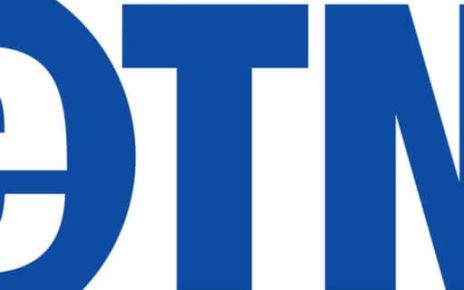Aviation safety is of vital importance, so it is no surprise that the risk of falling space debris is paramount to ICAO’s global community.
In 2022, more rockets and space objects were launched than in any previous year, based on data the United Nations Office of Outer Space Affairs (OOSA) shared with International Civil Aviation Organization (ICAO). This increase can be attributed to a large number of satellites now being deployed in low-earth orbit (LEO). There is significant growth in mega-constellations and an increased number of spacecraft after the end of their missions that will also need to be de-orbited in the future. Though the intent will be to manage this safely over the ocean, away from air routes, the increasing number of spacecraft to be launched raises an increasing possibility of uncontrolled re-entries, whether due to unpredictable failures or due to impacts with fragments from orbital collisions.
In February 2023, a joint workshop was hosted by the Outer Space Institute (OSI), McGill’s Institute of Air & Space Law (IASL, and the International Association for the Advancement of Space Safety (IAASS) to open dialogue on this issue, with the main focus on the casualty risks that re-entering space debris pose to the commercial aviation sector. The OSI published the outcome of this workshop; we are sharing the outcome and recommendations below with their permission.
There are more than seven thousand objects in low-earth orbit (LEO) that have large radar cross-sections consisting of abandoned rocket bodies, active and inactive satellites, and large debris fragments.
Since 2019, these objects have roughly doubled, driven mainly by the launch of constellations comprising of hundreds or thousands of satellites. Globally, there are tens of thousands of additional satellites being licensed, with hundreds of thousands of further satellites being proposed. The vast majority of these satellites will be in LEO, meaning many will reenter Earth’s atmosphere in the years and decades ahead. The number of rocket launches needed to construct and maintain these space systems will also increase, and with them, rocket body reentries.
Uncontrolled reentries of space objects pose risks to people on the ground, at sea, and in aircraft in flight, while also causing potential environmental and economic damage. The probability of impact on any single person, ship, or aircraft is small, but the risk should not be ignored.
In his opening remarks during the February workshop, ICAO Secretary General Juan Carlos Salazar drew attention to ICAO’s engagement with the air traffic management community to mitigate space launch risks. The Separation and Airspace Safety Panel of ICAO’s Air Navigation Commission continues to explore options based on the work done by Chicago Convention signatory states, including the FAA’s Acceptable Level of Risk (ALR) concept.
The Secretary General affirmed ICAO’s priorities: “The first in this area is to continue to identify and explain where there are clear mandates of the Chicago Convention relating to Space Transport. A second priority we’ve established is to acknowledge and plan our actions based on the clear understanding that this is a multi-sector problem, requiring a multi-sector solution.”
ICAO’s 184 Member States participated in the 41st Session of the ICAO Assembly last October, endorsing ICAO’s efforts to begin closely examining matters related to higher airspace operations, including space-bound vehicles as they traverse through the atmosphere.
We need to plan our actions based on the clear understanding that this is a multi-sector problem, requiring a multi-sector solution.
Juan Carlos Salazar, ICAO Secretary General
Juan Carlos Salazar, ICAO Secretary General, also noted ICAO’s third priority: “to focus on promoting near-term action by outer space stakeholders to implement the already existing Guidelines for the Long-term Sustainability of Outer Space Activities, and the Space Debris Mitigation Guidelines of the Committee on the Peaceful Uses of Outer Space.” He advised participants that ICAO would be working with UN OOSA to ensure that their recommendations would be duly considered by the outer space-related segments of next year’s United Nations Summit of the Future.
The potential casualty probabilities of some proposed satellite constellations are tens of a percent per replacement cycle. The aviation industry is particularly vulnerable to collisions with reentering space objects during flight. Due to their relative speed of impact, even small or light pieces of debris that may be harmless for people on the ground could fatally damage an aircraft in flight or otherwise necessitate emergency action by its crew.
Fortunately, uncontrolled reentries of rocket bodies are no longer necessary in most circumstances due to technological developments and improved mission designs. Uncontrolled reentries of satellites are not yet generally avoidable; however, steps can be taken to reduce reentry risks.
Although there are no verifiable reports of space objects striking aircraft, several aircraft have been damaged by collisions with unidentified objects at high altitudes. The risks are not confined to debris strikes. On at least one occasion, airspace was temporarily closed on account of an uncontrolled reentry of a rocket body. Airspace closures provide one example of how the economic risks from uncontrolled reentries are potentially larger than the physical risks, creating a further imperative for the following policy action:
- Raising awareness of the growing problem of uncontrolled reentries of space objects.
- Recognizing that uncontrolled reentries create casualty risks to people on the ground, at sea, and in aircraft in flight.
- Understanding that aircraft are especially vulnerable to strikes with space objects.
- Identifying that uncontrolled reentries of rocket bodies have become unnecessary in most circumstances, due to technological developments and improved mission designs.
- Acknowledging that uncontrolled reentries of satellites are still not generally avoidable, but that steps can be taken to reduce the reentry risks from them.
- Identifying that the consequences of uncontrolled debris reentries extend beyond personal injury or physical damage to include economic risks.
- Recognizing that avoiding uncontrolled reentries is one necessary step toward the sustainable and safe use of space.
The outcome of the workshop included these recommendations.
IMEX Frankfurt May 23-25 is where the global business events community comes together for four exhilarating days every year. Where more than 3,000 meeting planners meet with 2,500-plus suppliers from every corner of the globe. This is where powerful business connections that offer real ROI are made. Whether you’re an events newbie or a pro (or anything in between), IMEX 2023 is exactly where you need to be. REGISTER FREE FOR IMEX NOW



